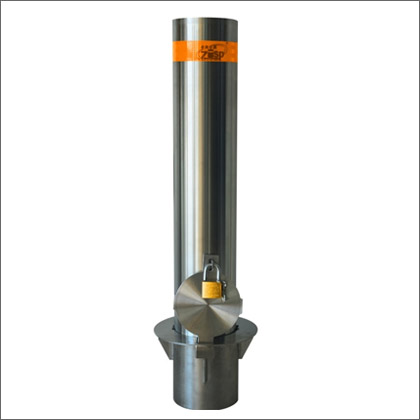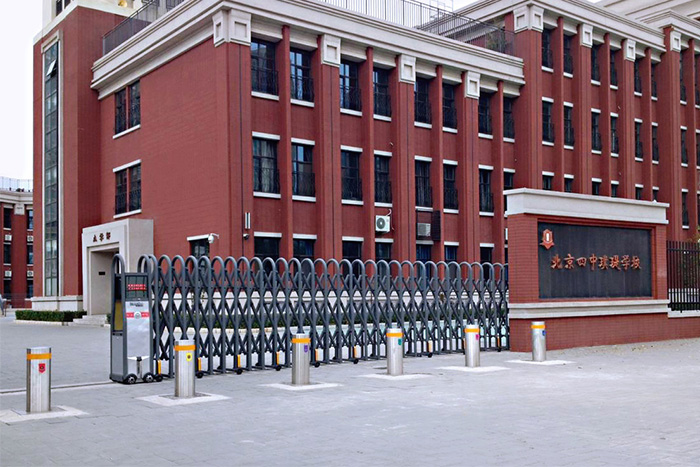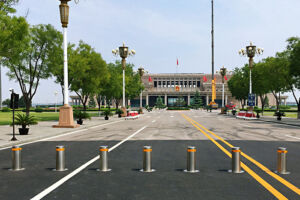Bollards are versatile and essential elements used in various environments for different purposes. These sturdy vertical posts serve multiple functions, ranging from traffic management and pedestrian safety to perimeter protection and urban beautification. In this article, we will explore the different types of bollards and their diverse uses in different settings.
1. Removable Bollards
Removable bollards are designed to provide temporary access control. They can be easily installed and removed when needed, making them an ideal choice for managing traffic flow during special events or maintenance activities. These bollards are commonly used in areas where occasional access restrictions are required, such as pedestrian zones, parking lots, and event spaces.
2. Fixed Bollards
Fixed bollards are permanently installed and serve as a more robust solution for traffic control and security. They are typically embedded into the ground with concrete foundations, providing a strong physical barrier to prevent unauthorized vehicle access. Fixed bollards are commonly used in front of buildings, storefronts, and critical infrastructure to protect against ramming attacks and control vehicle flow.
3. Decorative Bollards
Decorative bollards combine functionality with aesthetic appeal, enhancing the visual appeal of public spaces while serving various purposes. These bollards are available in a wide range of designs and finishes, making them suitable for beautifying streetscapes, parks, and pedestrian zones. Decorative bollards can also be equipped with reflective bands or lighting elements to improve visibility at night.
4. Security Bollards
Security bollards are heavy-duty and engineered to provide maximum protection against vehicle intrusion and potential threats. They are commonly used in high-security areas, such as government buildings, airports, stadiums, and critical infrastructure sites. Security bollards are designed to withstand high-impact forces and are an essential element in creating a secure perimeter to safeguard against hostile vehicle attacks.
5. Illuminated Bollards
Illuminated bollards combine lighting functionality with the physical barrier. They are equipped with integrated lighting fixtures to enhance visibility and safety in low-light conditions. These bollards are often used along pathways, walkways, and driveways to provide illumination for pedestrians and drivers, improving overall safety in outdoor spaces.
6. Flexible Bollards
Flexible bollards are designed to bend upon impact, making them an excellent choice for areas with frequent vehicle access. They can absorb the force of a low-speed impact, reducing damage to both the bollard and the vehicle. Flexible bollards are commonly used in parking lots, bike lanes, and areas where vehicle traffic needs occasional access.
7. Traffic Calming Bollards
Traffic calming bollards are used to reduce vehicle speeds and enhance pedestrian safety in urban areas. They are strategically placed along roadways to slow down traffic and create safer environments for pedestrians. Traffic calming bollards help in controlling vehicle flow, especially in school zones and residential areas.
8. Removable Security Bollards
Removable security bollards offer the flexibility of temporary access control while providing robust security measures when in place. They are commonly used in locations where vehicle access restrictions are required on an intermittent basis. Removable security bollards are an effective solution for managing traffic during events or maintaining security in sensitive areas.
Conclusion
Bollards play a crucial role in enhancing safety, security, and aesthetics in various settings. From traffic management to perimeter protection and urban beautification, the different types of bollards cater to diverse needs. By selecting the appropriate type of bollard for a specific application, businesses, municipalities, and organizations can effectively manage traffic flow, protect critical infrastructure, and create attractive and safe public spaces.
Frequently Asked Questions (FAQs)
Q1. Are all bollards made of the same material?
A: No, bollards can be made from various materials, including steel, concrete, plastic, and composite materials. The choice of material depends on the specific application and the level of security required.
Q2. Can decorative bollards also provide security?
A: Yes, decorative bollards can also be designed to provide a level of security. Some decorative bollards are engineered to have a solid core and are reinforced to offer protection against vehicle impact.
Q3. Are illuminated bollards energy-efficient?
A: Yes, many illuminated bollards use energy-efficient LED lighting, making them environmentally friendly and cost-effective in terms of energy consumption.
Q4. Can bollards be customized to match a specific architectural style?
A: Yes, many bollard manufacturers offer customization options to match specific architectural styles. Businesses and municipalities can choose bollards with unique designs, colors, and finishes to complement the surrounding environment.





